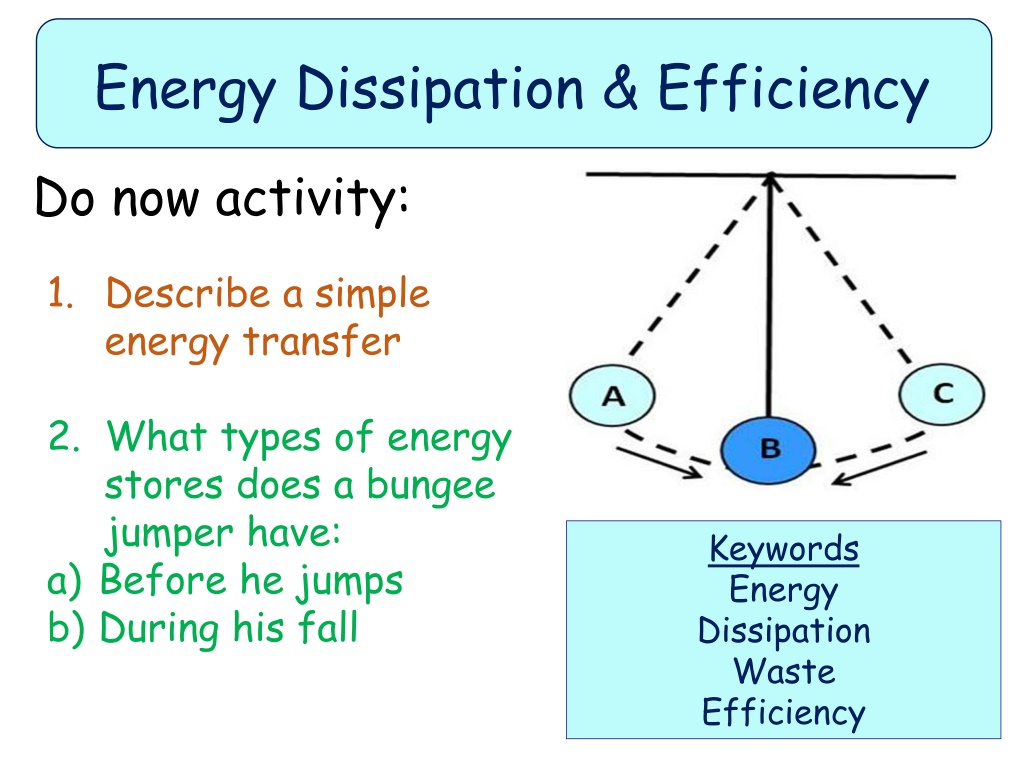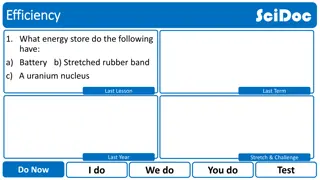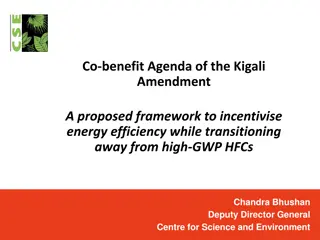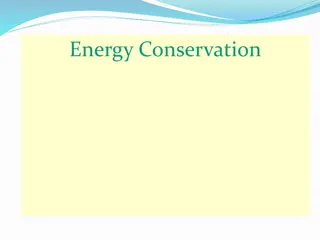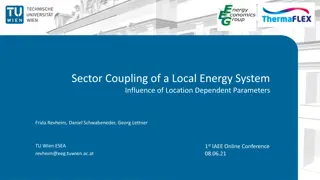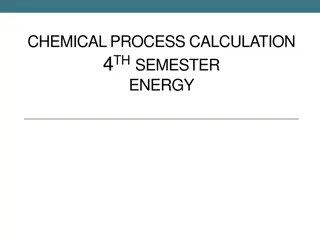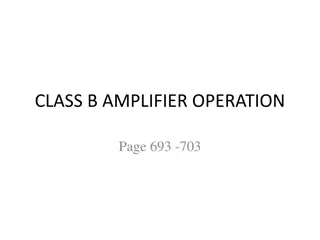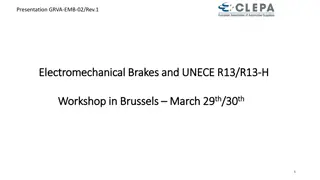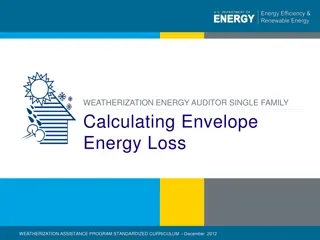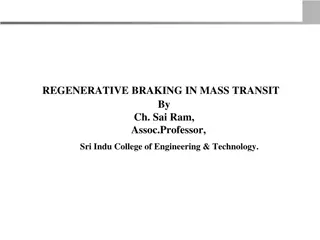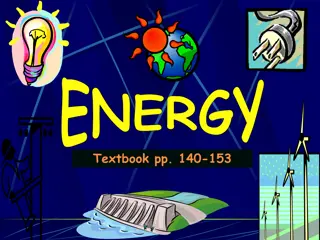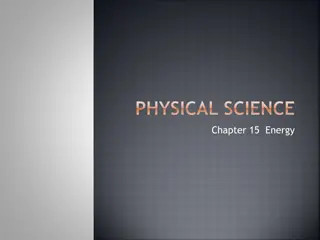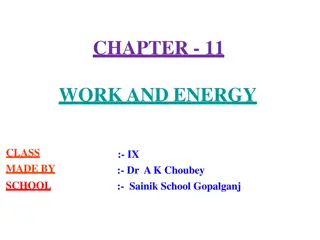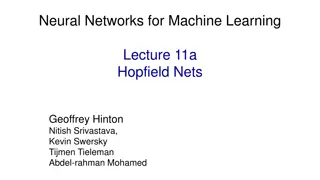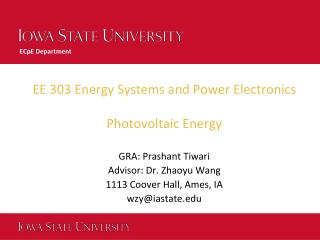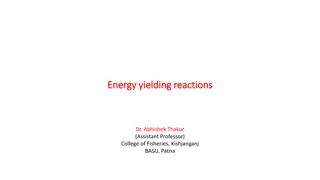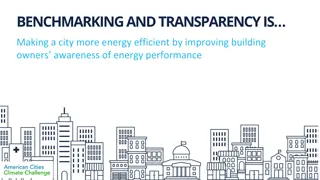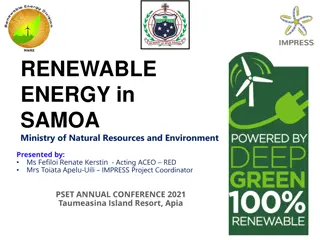Understanding Energy Dissipation and Efficiency in Systems
Explore the principles of energy dissipation, waste, and efficiency in various systems, such as a machine's energy transfer, bungee jumping, and useful vs. wasted energy in examples like a swinging pendulum. Learn to identify energy losses, useful energy transfers, and complete calculations for efficiency.
Download Presentation

Please find below an Image/Link to download the presentation.
The content on the website is provided AS IS for your information and personal use only. It may not be sold, licensed, or shared on other websites without obtaining consent from the author. Download presentation by click this link. If you encounter any issues during the download, it is possible that the publisher has removed the file from their server.
E N D
Presentation Transcript
Energy Dissipation & Efficiency Do now activity: 1. Describe a simple energy transfer 2. What types of energy stores does a bungee jumper have: a) Before he jumps b) During his fall Keywords Energy Dissipation Waste Efficiency
Progress indicators GOOD PROGRESS: State where energy is lost in a particular system Identify the correct calculation to use on a particular problem OUTSTANDING PROGRESS: To consider the useful and wasted energy in a system and complete calculations on efficiency calculations
A machine transfers energy for a purpose. Friction between the moving parts of a machine causes the parts to warm up. So, not all of the energy supplied to the machine is useful. Useful energy is energy transferred to be where it is wanted in the way that is wanted Wasted energy is the energy that is not usefully transferred This energy is dissipated to the surroundings
Example: Useful energy transfer: Kinetic Energy Gravitational Potential Energy Chemical energy store of fuel Wasted energy transfer: Thermal Energy Sound Energy
Task: Complete the flow diagrams on the worksheet to represent the useful and wasted energy transfers for the following systems: Riding a bike Running Washing machine
When energy spreads out it gets less and less useful Thermal energy store of the water decreases as it transfers energy by heating to the thermal energy store of the radiators. The thermal energy store of the radiators gets transferred to the thermal energy store of the air in the room and eventually this is transferred through the walls to the air outside the house.
Quick Check: a) Describe the energy transfers and changes to energy stores of a pendulum as it swings from one side to the middle, and then to the opposite side. (4 marks) b) Explain why a swinging pendulum eventually stops (3 marks)
Self-assessment: a) As the pendulum is raised to point A the pendulum gains gravitational potential energy. When the pendulum is released the gravitational potential energy is transferred to the kinetic energy store of the object. As the pendulum moves past point B to point C some of the kinetic energy is transferred back to the gravitational potential energy store. Some energy is lost from the pendulum to the surroundings as thermal energy, due to the frictional force of air resistance between the pendulum and the surrounding air. b) In air, the pendulum will eventually stop moving. As the pendulum is moving through the air the frictional force of air resistance means that the kinetic energy store of the object is slowly being transferred to the thermal energy store of the surrounding air. Until eventually the kinetic energy store is completely dissipated as thermal energy to the surroundings and the pendulum comes to a stop.
Energy and efficiency Energy supplied to a device is called the input energy Some of the input energy doesn t get usefully transferred as output energy, this is the wasted energy of the system. The useful energy transferred by the device is useful output energy Input energy = Useful energy = 80J of light energy Wasted energy = 20J of heat energy
For any device that transfers energy: Useful output energy transferred by the device (J) Total input energy supplied to the device (J) Efficiency = Work out the efficiency for the following devices: a) A petrol engine is supplied with a total of 1000J of chemical energy, 250J of this energy is usefully transferred to kinetic energy. b) A diesel engine is supplied with 6000J of chemical energy and usefully transfers 2100J of chemical energy to kinetic energy. c) An electric motor uses 50J of electrical energy and transfers 40J of useful energy
For any device that transfers energy: Useful output energy transferred by the device (J) Total energy supplied to the device (J) Efficiency = Work out the efficiency for the following devices: a) 250J/1000J = 0.25 or (x 100) = 25% b) 2100J/6000J = 0.35 or (x 100) = 35% c) 40J/50J = 0.80 or (x 100) = 80%
Task: Complete the worksheet on energy efficiency calculations
Self-assessment: 1. An electric motor takes 1200J of electrical energy and does 450J of work 2. A cyclist has 200J of energy and does 30J of work on his/her bike 1. 0.375 or 37.5% 3. A petrol engine takes 3400J of chemical energy and transfers 2200J of energy as kinetic energy, 800J of energy as thermal energy and 400J as sound energy. 2. 0.15 or 15% 4. A rocket engine takes in 800J of chemical energy and changes this into 450J of kinetic energy and 350J of heat energy 3. 0.647 or 64.7% 5. A jet engine gas turbine takes in 1200J of chemical energy and give out 960J of kinetic, 180J of heat and 60J of sound energy. 4. 0.56 or 56% 6. A TV takes in 700J of electrical energy and gives out 300J of light energy, 240J of sound energy and 160J of heat energy. 5. 0.8 or 80% 6. 0.77 0r 77%
Task: Copy and complete the following table: 60 J 60 % 160 J 75 % 420 J 325 J 580 J 175 J 20 J 8 J 142 J 108 J Self-assessment
Exam-style question: Exit Card Task: Complete the past-paper question, as you leave the room you will need to hand the question to me. I will mark it and grade it for next lesson.
1. The following diagram shows the energy transferred each second by a television set. 1. The following diagram shows the energy transferred each second by a television set. Heat 180J Heat 180J Electricity 500J Electricity 500J Light 260J Light 260J Sound 60J Sound 60J i) What form of energy is transferred as waste energy by the television set? i) What form of energy is transferred as waste energy by the television set? ii) What percentage of energy was wasted by the television set? ii) What percentage of energy was wasted by the television set? iii) Work out the efficiency of the television set, as a percentage. iii) Work out the efficiency of the television set, as a percentage.
Mark scheme for exit card: i) Heat energy ii) 36% of energy was wasted as heat energy (180J/500J = 0.36, x 100 = 36%) iii) Useful energy = light and sound energy = 260J + 60J = 320J. 320J/500J = 0.64, x 100 = 64%.
1. An electric motor takes 1200J of electrical energy and does 450J of work 1. An electric motor takes 1200J of electrical energy and does 450J of work 2. A cyclist has 200J of energy and does 30J of work on his/her bike 2. A cyclist has 200J of energy and does 30J of work on his/her bike 3. A petrol engine takes 3400J of chemical energy and transfers 2200J of energy as kinetic energy, 800J of energy as thermal energy and 400J as sound energy. 3. A petrol engine takes 3400J of chemical energy and transfers 2200J of energy as kinetic energy, 800J of energy as thermal energy and 400J as sound energy. 4. A rocket engine takes in 800J of chemical energy and changes this into 450J of kinetic energy and 350J of heat energy 4. A rocket engine takes in 800J of chemical energy and changes this into 450J of kinetic energy and 350J of heat energy 5. A jet engine gas turbine takes in 1200J of chemical energy and give out 960J of kinetic, 180J of heat and 60J of sound energy. 5. A jet engine gas turbine takes in 1200J of chemical energy and give out 960J of kinetic, 180J of heat and 60J of sound energy. 6. A TV takes in 700J of electrical energy and gives out 300J of light energy, 240J of sound energy and 160J of heat energy. 6. A TV takes in 700J of electrical energy and gives out 300J of light energy, 240J of sound energy and 160J of heat energy.
Extension: Mark your work
